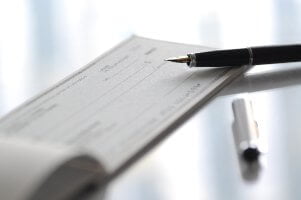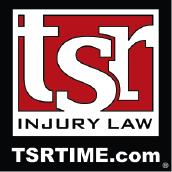When Will I Get the Settlement Check For My Minnesota Car Crash Claim?
 You might think you will get a settlement check soon after your lawyer reaches an agreement with the at-fault insurance company. However, there are still many steps that occur after you reach a settlement agreement and before you receive a settlement check for your damages.
You might think you will get a settlement check soon after your lawyer reaches an agreement with the at-fault insurance company. However, there are still many steps that occur after you reach a settlement agreement and before you receive a settlement check for your damages.
TSR Injury Law’s experienced Minneapolis-based car accident attorneys explain how long it takes to get a settlement check for a Minnesota vehicle crash claim. You can learn more about this process when you contact our firm. The bottom line is, we are committed to getting full compensation for your damages as fast as possible.
We have been assisting crash victims and other personal injury victims for decades, and we have recovered more than $1 billion on their behalf.
No upfront fees to discuss your claim. Call to learn more: (612) TSR-TIME.
What is a Settlement?
You can think of a settlement as a contract between an injured party and the insurance company of the at-fault party. The insurance company agrees to pay a certain amount to cover your damages (medical bills, lost wages and more). In turn, you give up the right to file any more claims against the insurance company for the same incident.
A settlement ends a dispute between two parties. In a car crash case, the dispute is often about the value of the crash victim’s damages. The insurance company may also dispute the connection between the crash and the cause of your injury in order to avoid as much responsibility and payout as possible.
Most cases settle because insurance companies want to limit risk and clients want to wrap up the case for an acceptable amount and not wait for a trail result that could be years away. Injured victims should still hire an attorney who has courtroom experience because going to court is sometimes the only way to obtain the compensation you deserve. Settlements are also higher when the insurance company knows the attorney has gone and will go to court. The fear of a potential jury trial makes insurance companies more likely to settle, especially when facing expert trial lawyers like those at TSR.
What Are the Steps to Receiving a Settlement Check in Minnesota?
It is true that every Minnesota car crash case is different. That said, the steps in the legal process are usually the same, including the process for receiving your settlement check.
Signing the Settlement Agreement
A settlement agreement cannot be finalized until both parties involved have signed it. From the insurance company’s perspective, one of the most important parts of the settlement agreement is the release from liability.
This section says that once you have given your signature, you agree to give up the right to take further legal action against the insurance company. This step protects the insurance company and gives them certainty of future financial exposure as there would be no reason for the insurance company to settle without obtaining protection from further legal action.
Your attorney will review the settlement agreement before giving it to you to sign. This review ensures the release accurately reflects the settlement. Nothing more and nothing less. There are many types of releases and legal jeopardies that must be reviewed.
Processing the Settlement and Issuing a Check
Sometimes an insurance company will send the check and release at the same time. If instead, a signed release is precedent before sending a check, the release is sent back to the insurance representative and the settlement check is mailed. The check is usually made out to the client and law firm.
Clearing the Check and Paying Liens and Legal Fees
After receiving the check from the insurance company, your lawyer will deposit the check into the firm’s IOLTA account. This stands for Interest on Lawyer’s Trust Account. All settlement checks go into and through the IOLTA account. There is a five-day waiting period for the check to clear. After five days, the attorney will distribute the funds to the client and any other entities that are agreed upon to be paid. This includes medical providers, subrogation liens, attorney fees and file costs. Legal costs are above the legal fee. Fees are how the lawyer earns a living and the costs are reimbursements for expenses already spent on a file. They could include costs for:
- Hiring an expert witness
- Court reporting fees
- Obtaining medical records
- Obtaining medical bills
- Filing court documents
- And more
A portion of the settlement may repay health insurance subrogation liens. This is something victims incur when they have bills paid by their health carrier above and beyond the auto insurance coverage.
There may also be liens on the case that have to be paid from a settlement. An example of a lien would be for child support. If the victim owes child support, some of the settlement would go to the child support organization to pay off the lien.
Sending You a Check
Once all the fees, costs and liens have been paid, your attorney’s law firm will send you a check with the rest of your settlement. This amount will be known before the settlement is finalized so the client can agree to it before processing.
How Long Will It Take to Get a Settlement Check in Minnesota?
It usually takes several weeks to receive a settlement check. However, it could happen sooner. If you have concerns or questions about how quickly this happens, you can discuss it further with your lawyer.
Potential Delays in the Settlement Check Process
These are some of the common reasons why there may be delays in receiving your car crash settlement check:
- Clerical errors made by the insurance company
- Missed signatures
- Bank delays, which could happen for many reasons, such as if the check was received on a Friday or the day before a holiday
- The claim involves a minor or an estate
- There are disputes about the release from liability
- The insurance adjuster got sick or went on vacation
- Your lawyer needs more time to negotiate liens, which may help you to keep more of your settlement
- Insurance company stalling
Contact TSR Injury Law to Discuss Your Car Crash Claim
Our firm has helped many car crash victims in Minneapolis recover compensation for medical costs and other damages. We have taken on many insurance companies and have extensive knowledge of the legal process.
At TSR Injury Law, we work hard to secure favorable results for our clients.
There are no upfront fees for our services, and we do not get paid unless we obtain compensation for you.
Call us to schedule your free consultation: (612) TSR-TIME.


 Many car crash victims initially feel soreness and fatigue. While soreness may take weeks or months to dissipate, fatigue usually resolves itself within a couple of days.
Many car crash victims initially feel soreness and fatigue. While soreness may take weeks or months to dissipate, fatigue usually resolves itself within a couple of days.